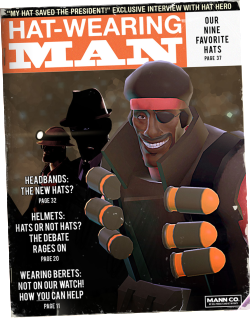The Microtransaction Investigation
September 19, 2011 | 08:01
Companies: #bit-gamer #bit-gamernet #eve-online

The DLC Investigation
 The days when you could buy a videogame one day and get an expansion a year later are, sadly, lost in time. Instead, it seems there's a constant bombardment of DLC and microtransaction items all vying for our credit card numbers. They're in everything, from MMORPGs through to singleplayer shooters, and it's only getting worse as time goes on.
The days when you could buy a videogame one day and get an expansion a year later are, sadly, lost in time. Instead, it seems there's a constant bombardment of DLC and microtransaction items all vying for our credit card numbers. They're in everything, from MMORPGs through to singleplayer shooters, and it's only getting worse as time goes on. Gamers are told that free-to-play games are the future and that microtransaction-supported titles are a huge source of profit for PC games, but at the same time there's a huge section of the audience that will instantly dismiss free-to-play games as soon as they're announced.
'It's too expensive', 'Pay to win' and 'It feels cheap' - these are the complaints often levelled at free-to-play games, while others worry that they are paying for content that's been deliberately cut from the original release.
These sound like fair arguments, but are they really? We're not sure, so we decided to grab our clipboard and calculator, setting out to investigate several of the most popular microtransaction-supported games.
The aim is to find out how they compare in terms of pricing and value, then assess whether items are fairly priced, have an impact on the game, and if the addition of microtransactions are of benefit to all players or just those who pay. Basically; are gamers being served or milked by the implementation of microtransactions within these games?
For the conclusions of the investigation to be relevant, the games in question must also be broadly comparable. There's little point in diving into Korean MMORPGs that explicitly follow the 'pay to win' business model, as those games will be deliberately imbalanced to favour regularly paying customers.
Western developers, however, claim to avoid falling into this 'pay to win' genre; which begs the question of whether they're telling the truth or just selling empty promises. Thus, these are the games we're going to analyse - flip the page to see the seven games we've chosen to look at.
Addendum
When viewed together, these seven games have 805 individual items within them that are available through microtransactions. We’ve tried to get in everything that can be paid for, but the data is a little incomplete. Basically, League of Legends contains roughly 500 items and we were halfway through importing them (manually, one by one) when the game issued an update. We have 350 of these items catalogued in this report.
MSI MPG Velox 100R Chassis Review
October 14 2021 | 15:04









Want to comment? Please log in.